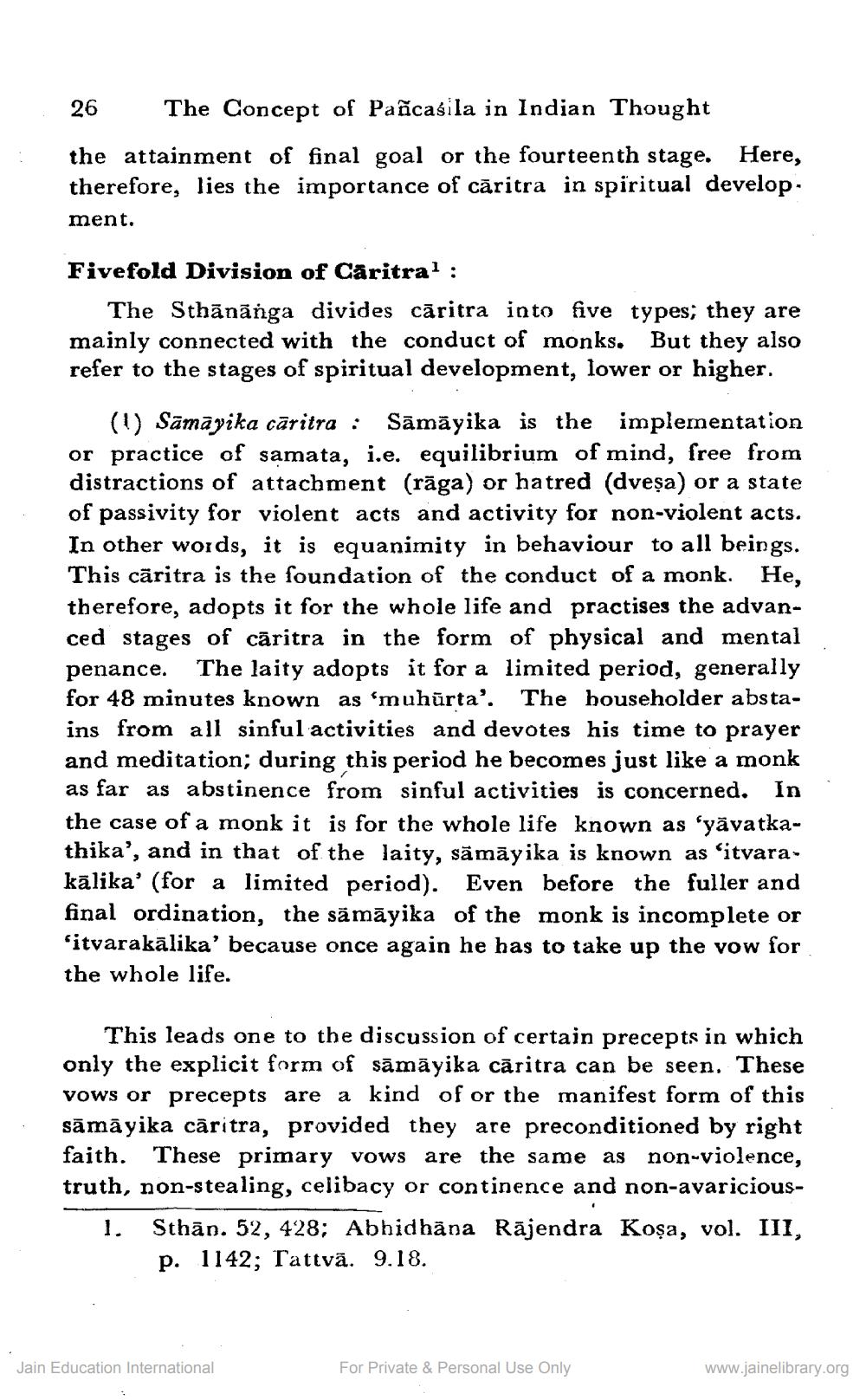________________
26 The Concept of Pañcasila in Indian Thought the attainment of final goal or the fourteenth stage. Here, therefore, lies the importance of caritra in spiritual develop. ment.
Fivefold Division of Caritral :
The Sthānānga divides cāritra into five types; they are mainly connected with the conduct of monks. But they also refer to the stages of spiritual development, lower or higher.
(1) Sāmāyika cāritra : Sāmāyika is the implementation or practice of samata, i.e. equilibrium of mind, free from distractions of attachment (rāga) or hatred (dveşa) or a state of passivity for violent acts and activity for non-violent acts. In other words, it is equanimity in behaviour to all beings. This cãritra is the foundation of the conduct of a monk. He, therefore, adopts it for the whole life and practises the advanced stages of cāritra in the form of physical and mental penance. The laity adopts it for a limited period, generally for 48 minutes known as 'muhūrta'. The householder abstains from all sinful activities and devotes his time to prayer and meditation; during this period he becomes just like a monk as far as abstinence from sinful activities is concerned. In the case of a monk it is for the whole life known as 'yāvatkathika', and in that of the laity, sāmāyika is known as 'itvara. kālika' (for a limited period). Even before the fuller and final ordination, the sāmāyika of the monk is incomplete or 'itvarakālika' because once again he has to take up the vow for the whole life.
This leads one to the discussion of certain precepts in which only the explicit form of sāmāyika căritra can be seen. These vows or precepts are a kind of or the manifest form of this sāmāyika câritra, provided they are preconditioned by right faith. These primary vows are the same as non-violence, truth, non-stealing, celibacy or continence and non-avaricious1. Sthān. 52, 428; Abhidhāna Rājendra Koșa, vol. III,
p. 1142; Tattvā. 9.18.
Jain Education International
For Private & Personal Use Only
www.jainelibrary.org




